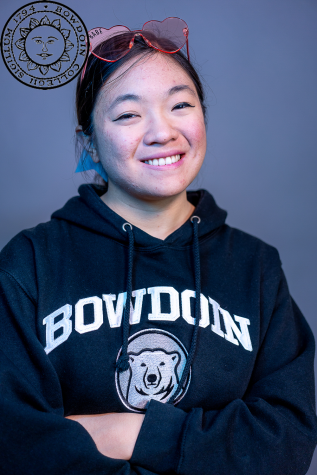The Parasocial Ladder
The expansion of the public eye has changed the dynamic between what it means to be a performer and an audience.
The internet has exacerbated the creation and influence of one-way relationships.
February 22, 2023
As life becomes increasingly digitized, so too have our relationships. In the past twenty years, the world has moved to Discord chats, Twitter threads, and subreddits, making it easier than ever to build friendships—and even romances—online. The digital era has also brought an increase in what is known as parasocial relationships, or relationships in which one party feels a bond towards a person that does not know of their existence.
Recall the devotion many Western audiences have towards Korean pop group BTS, or the love confessions singers like Harry Styles or Taylor Swift receive on the daily.
However, the idea of parasocial relationships was established long before the creation of the internet. It was developed in the 1960’s in the context of a more traditional mainstream celebrity culture—namely, that of movie and T.V. stars. Donald Horton and R. Richard Wohl of the University of Chicago conducted the first study of parasocial relationships, establishing the concept’s place in sociological and media studies.
As media has become more interactive and the public has become accessible to practically anyone, these relationships have taken more space in our culture. In 2013, a study found that the average American spends 20% of their day watching television, as well as an additional 32 hours online. Undoubtedly, our society’s connection to the online sphere has only grown in the last ten years.
Social media allows posts from celebrities, bloggers, and online personalities to intermingle with those of friends and family, letting us consume the minutiae of lives that are not even aware of our own. It should not be a surprise that our brains categorize these public figures in the same boxes that we put friends in. A study from Purdue University found that parasocial relationships are very similar to real bonds, with similar levels of commitment and investment to these public figures.
“Parasocial interaction that was once restricted to limited television or radio exposure now seems to be virtually without bounds,” the study stated. “Exposure to a media figure’s intimate thoughts, feelings, and behaviors through mediums like Twitter, Facebook, and fan pages likely allows for an increased sense of shared experiences and closeness.”
However, many people have found a way to make this dynamic work for them.
A study from the University of Michigan found that parasocial relationships can exist as safer explorations of romantic identity, family and peer relationships, or even career aspirations. It also found that romantic parasocial relationships, especially in terms of a woman becoming attached to a male public figure, is the natural consequence of the cultural emphasis on romance that is pushed on women. These relationships can function as romantic experimentation with minimal physical or emotional risk. The study found a similar role for LGBTQ+ youth, allowing younger members of the community to explore their gender or sexuality in a safer context.
Parasocial relationships can also be used to supplement social causes. In 2020, the BTS fandom was able to raise over $1 million for Black Lives Matter charities after the band donated to them. Similarly, in March 2018, a then 16-year-old Brazilian fan and her Twitter followers helped to launch “One In An ARMY,” a volunteer group of nearly 30 organizers and translators that has conducted monthly campaigns for 22 charities across the globe. A 2022 study for the National Library of Medicine also noted that parasocial relationships with YouTubers has reduced prejudice towards mental health issues, particularly Borderline Personality Disorder, one of the more stigmatized mental illnesses in recent history.
In addition, many celebrities and online personalities cultivate these relationships knowingly. The benefit of these one-sided bonds is that they create a very strong sense of loyalty to the public figure. When they are criticized, parasocially linked fans (often called “stans”) leap to defend them, regardless of whether or not they deserve that defense.
As fashion influencer Camille Charrière told The Guardian, “Sharing your children, your boyfriend, the inside of your home, perhaps about your mental health or other illness struggles, family stuff—all of that performs better on social media. Anything that is very intimate and relatable, and that other people can identify with.”
These defenses, however, are not necessarily good things. Unthinking devotion to a person or group of people without regard to their morality or ethics can be dangerous. A 2018 study by Massey University found that parasocial relationships have become pivotal in presidential systems of government. Later on, in 2020, a study from the journal Frontiers in Communication found that those most impressionable by former president Donald Trump’s statements, particularly about the existence of COVID-19, were those parasocially linked with him.
YouTuber Ro Ramdin spoke in a video essay about her experience with fandoms willing to excuse racism, dishonesty, and even alleged grooming because of these perceived relationships. In regards to the Minecraft YouTuber Dream, Ramdin stated, “Dream isn’t just a content creator or a person. He’s their best friend, closest confidant, and a sort of liberator. [He’s] somebody who is willing to accept a massive group of outcasts with open arms and constantly affirm his love, acceptance, and need for them.”
While many creators cultivate parasocial relationships to their advantage, others have stated a clear discomfort with the concept. Though not without his faults, comedian and former YouTuber Bo Burnham is a clear case study of a rejection of these relationships. He actively tries to dissuade them, and much of his 2020 Netflix special Inside focuses on the dynamic between the audience and the performer in the digital age.
What Burnham eventually realized is that performers, audiences, and anyone and everyone in-between cannot stop the forming of these relationships. They are natural byproducts of creators being in the public eye, from television to Instagram to a blog with twenty followers. And while these relationships can be used and geared in a myriad of ways, the decision ultimately comes down to if it is worth it to the performer to leave the public eye, whether that means deleting their account or disappearing completely from the internet.
In a different special, right before Burnham left the stage for what he thought would be the final time, he performed a seven-minute rant called “Can’t Handle This.” In this performance, Burnham said to his audience, “The truth is my biggest problem is you. I wanna please you, but I wanna stay true to myself. I wanna give you the night out that you deserve, but I wanna say what I think and not care what you think about it. A part of me loves you. A part of me hates you. A part of me needs you. A part of me fears you.”














Isaiah • Oct 25, 2024 at 8:24 am
Good article.